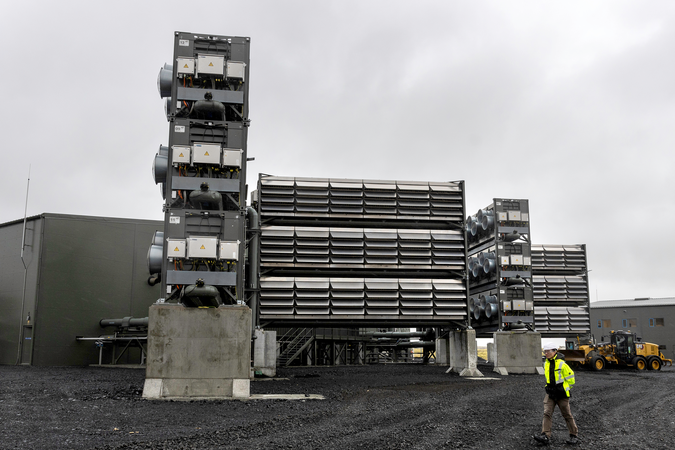Social Cost of Carbon 101
A review of the social cost of carbon, from a basic definition to the history of its use in policy analysis.
Author Note
This explainer was originally written by Kevin Rennert and Cora Kingdon. Brian Prest, the director of RFF’s Social Cost of Carbon Initiative, updated this explainer in 2025.
Watch the Video Explainer
Introduction
The social cost of carbon (SCC) is an estimate, in dollars, of the economic damages that result from emitting an additional ton of carbon dioxide into the atmosphere. The SCC puts the effects of climate change into economic terms to help policymakers and other decisionmakers understand the economic impacts of decisions that would increase or decrease emissions. Policymakers currently use the SCC to inform billions of dollars of policy and investment decisions in the United States and abroad. This explainer reviews how the SCC is used in policy analysis, how it is calculated, and how it came to be.
How Is the SCC Used in Policy Analysis?
One of the primary ways the SCC is used in policy design and evaluation is through benefit-cost analysis. A benefit-cost analysis compares the total economic benefits of a proposed policy to its total economic costs. Take, for example, a regulation that limits air pollution: its total benefits—such as improving public health and environmental conditions through better air quality—would be compared against the implementation costs, such as purchasing and installing equipment to control air pollution. Benefit-cost analysis has been a required part of federal regulatory analysis since it was implemented by the Reagan administration in 1981.
The SCC is used in benefit-cost analysis to quantify the dollar value of a policy’s effect on climate change due to changes in greenhouse gas emissions. For policies that increase emissions, the expected increase in emissions (in tons) is multiplied by the SCC, and the resulting dollar amount is included as part of the total estimated costs of the policy. For policies that decrease emissions, the change in emissions is multiplied by the SCC, and the result is added to the expected benefits of the policy.
Using the SCC to Calculate Costs and Benefits of Changing Emissions

How Is the SCC Calculated?
Estimates of the SCC are calculated in four steps using specialized computer models.
- Step 1: Project future emissions based on population, economic growth, and other factors.
- Step 2: Model future climate responses, such as temperature increase and sea level rise.
- Step 3: Assess the impacts that these climatic changes will have on economic and social outcomes like agriculture, human health, energy use, and damage to coastal infrastructure.
- Step 4: Convert future damages into their present-day values and add them up to determine total damages.
These four steps are completed to obtain a baseline value for the damages of emissions. Then, the modeling process is repeated with a small additional amount of emissions to see how much it increases damages. The increase in damages from the additional emissions provides an estimate of the SCC. The model is then run many thousands of times under alternative possible inputs to evaluate the range of uncertainty of the estimates.
In partnership with an interdisciplinary group of researchers at the University of California Berkeley and other universities around the country, RFF’s Social Cost of Carbon Initiative developed a modern model to estimate the SCC called the Greenhouse Gas Impact Value Estimator (GIVE). That work was published in Rennert et al. (2022) through the peer-reviewed journal Nature and found an estimated SCC of $185 per ton of CO₂, up significantly from previous federal estimates of about $50 per ton. In 2023, the US Environmental Protection Agency (EPA) drew heavily from RFF’s work and updated its central SCC estimate to $190 per ton of CO₂.
Where Is the SCC Used Now?
The SCC has been used across the US federal government. It is also used in several states and other countries , as well as in a range of decisionmaking contexts:
- In New York and Illinois, the SCC serves as the basis for the value of “zero-emission credits” paid to electric utilities under state clean energy legislation.
- In Colorado, Minnesota, and Washington State, electric utilities are required to use the federal SCC in their resource planning.
- In California, recent state legislation requires regulators to incorporate the SCC in policy analysis.
- In 2023, the Canadian government directly adopted the updated EPA estimates.
- In 2024, the German Environment Agency adopted GIVE for its estimates of the SCC, with some adjustments to align with the German context.
- Several proposals for a federal carbon tax introduced by members of Congress suggest a starting tax level approximately equal to the previous estimates of the SCC.
- The Inflation Reduction Act of 2022 included a charge on methane emissions from the oil and gas industry whose value closely corresponds to an estimate of the social cost of methane (which is analogous to the social cost of carbon, but for methane emissions).
SCC Calculation Considerations
Many modeling choices affect the value of the SCC. The models are based on research and expertise from many different fields, such as climate science, demography, and economics. Additionally, the modeling must incorporate inherently uncertain information, such as projections of future economic growth.
Discount Rate
The discount rate used in estimating the SCC can reflect both empirical evidence and value judgements. In Step 4 of the SCC modeling process described above, future damages are converted into present-day values by using a discount rate to determine how much weight is placed on impacts that occur in the future. Future costs and benefits are generally considered less significant than present costs and benefits, and the discount rate reflects this level of relative significance. A high discount rate means that future effects are considered much less significant than present effects, whereas a low discount rate means that effects are closer to being equally significant. The effects of different discount rates on estimates of the SCC can be seen in the table below.

Rennert et al. (2022). For more information about the SCCs associated with the 2 and 3 percent discount rates, visit RFF’s SCC Explorer.
Global vs. Domestic
Another assumption made in SCC modeling is the geographic scope of the calculation. How SCC estimates with different geographic scopes are used in decisions also reflects value and policy judgements. In Step 3 of the SCC modeling process, the economic impacts can be calculated based on global damages (the total effects of emissions felt all around the world) or they can be limited to domestic damages (e.g., those felt within the United States). This choice significantly affects the outcome of SCC estimation because the United States is only one of the many countries affected by a changing climate.
Uncertainty
In calculating the SCC, it is necessary to make some assumptions that introduce uncertainty. For example, there is a range of plausible values for certain inputs to the SCC models, such as future economic growth rates and the magnitude of the response of the climate system to greenhouse gas emissions. To account for this uncertainty, the models are run many thousands of times with different values for the uncertain variables and parameters. Given the range of uncertainty involved in this calculation, the SCC is best represented not as a single number, but as a range of possible values. For practical applications, however, a central case value is chosen, which is usually the average of all the estimates for a given discount rate. Government analyses have also previously reported a “high impact scenario” to represent an upper-end indication of uncertainty in the estimates.
The Range of Values of the SCC

Rennert et al. (2022). This figure shows the range of SCC values from RFF’s GIVE model for four different discount rates: 3%, 2.5%, 2.0% (the central case), and 1.5%.
Policy Evolution of the SCC
While benefit-cost analyses have been required to assess the implications of economically significant regulations since the Reagan administration, the effects of greenhouse gases on climate change were not considered in these analyses until more recently. In 2008, the Center for Biological Diversity took the US government to court over new fuel economy standards, arguing that by not accounting for future costs from climate change, policymakers had implicitly valued the costs of damages from climate change to be precisely zero. The courts ruled that the US government must account for the costs and benefits of changes in greenhouse gas emissions in its economic analyses. The federal government employed the SCC in response.
In the federal government’s initial implementation of the SCC, government agencies and departments each developed and applied their own estimates. During the Obama administration, the Office of Management and Budget convened an Interagency Working Group on the Social Cost of Carbon to develop a harmonized set of estimates to be applied consistently across the federal government. The group consolidated multiple models drawn from the academic literature and ran them over a range of standardized input scenarios to arrive at the federal government’s estimates of the SCC.
In 2016, the Interagency Working Group turned to the National Academy of Sciences (NAS) for guidance on how best to improve, refine, and update its modeling process. In 2017, led by RFF scholars Richard G. Newell and Maureen Cropper, NAS published a comprehensive report laying out ongoing research priorities to ensure the SCC remains grounded in the best available science. The report’s findings helped inform the development of RFF’s Social Cost of Carbon Initiative, which stewards a global team of distinguished scientists and economists working to advance the NAS recommendations.
In 2017, President Trump signed Executive Order 13783 which, among other actions, disbanded the Interagency Working Group on the Social Cost of Carbon and stated that the estimates generated by the Interagency Working Group were not representative of government policy. Rules proposed by several agencies after the issuance of Executive Order 13783 relied on a set of interim estimates based on the same methodology and infrastructure as used by the Interagency Working Group, but with two modifications: calculating only damages occurring within the United States and employing discount rates of 3 percent and 7 percent for use in the primary analysis of regulations. Interagency Working Group estimates had previously reported global damage numbers and had employed discount rates of 2.5 percent, 3 percent, and 5 percent. These changes significantly altered SCC estimates.
President Biden later reinstated the Obama administration’s central case value of $51/ton of carbon dioxide (adjusted for inflation) as an interim value for the SCC. The Biden administration also reconvened the Interagency Working Group and tasked it with updating the SCC in accordance with the 2017 NAS recommendations by early 2022. While the Interagency Working Group did not release an updated SCC before President Biden left office, in November 2023 EPA updated its own central estimate to $190 per ton.
In an Inauguration Day executive order, President Trump disbanded the Interagency Working Group and called for EPA to reconsider the social cost of carbon. On March 12, 2025, EPA confirmed that the agency would “overhaul” the SCC, although there remained uncertainty about what that effort would mean.
Authors

Cora Kingdon





